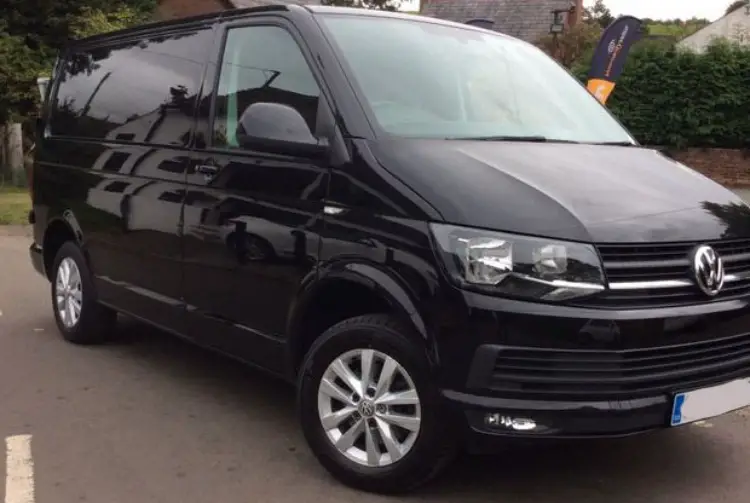There’s something for everyone in the VW Transporter Series. Picking the best one for you is like choosing your favourite Beatle: they all bring something unique to the table, it’s just a case of which one you feel has that connection to you.
The first thing I want you to know about the Transporter series is that it is more than just a van. I have had the chance to try out some of the vehicles in this series to find out what purpose each van serves and if they are worth it. The VW transporter is one of the UK’s favourites and since it comes in a broad range of variants, this series is almost guaranteed to satisfy your needs.
VW Transporter Overview

Also known as Kombi in some parts of the world, the Volkswagen Transporter series has been a vital part of Volkswagen’s commercial arm since mid-century. Perhaps best known for its rear-engined, air-cooled T2 and T1, the VW Transporter was launched in 1990 the T4, which marked the first time a water-cooled engine was installed in the front of the van. The latest VW Transporter is T7 and was launched in 2021, and the early word is that the new battery placement, low-down on the chassis, has given the model even BETTER handling on the roads! But let’s have a little look at what came before it…
VW Caravelle compared to the Transporter
Volkswagen has proven that a van should not just be a box on wheels; it can be innovative, stylish, and extremely fun to use and drive. When it comes to Caravelle versus the Transporter, the big difference is found in the back. The Caravelle features five seats of the highest quality. Its front two seats can be swiveled around so that they face the rear. They certainly feel a couple of levels above the seats in the Transporter. Moreover, the doors and roof are fully trimmed.
In terms of performance, the two are quite similar despite the Caravelle being a little bit heavier. The carpeted floor means it is very quiet when driving on the motorway. The ride is also a little steadier in the Caravelle because it has suspension as standard. But this sacrifices practicality.
The Caravelle has decent-sized luggage space, but it is not as spacious as the back of its counterpart, the Transporter. Additionally, the rubber floor of Caravelle is much easier to maintain and keep the vehicle clean, making it an ideal option for families.
Since very few units of the Caravelle were made, they are quite harder to find one today.
The Transporter Shuttle is often viewed by users as an in-between van for those undecided between Caravelle and Transporter.
VW California compared to the Transporter
The VW California van comes as a standard with a great specification list, but the Transporter can surely hold its own against it.
For anyone looking to buy a compact van that can be used as a day-to-day vehicle, you will have a lot of options. When you opt for a Transporter campervan, you can get it converted and fitted out to match your style. A conversion process can be customized to suit your needs and desires, providing you and your family with a perfect campervan. What is more, you can choose the accessories you want to be fitted in your van to express your personality and taste.
As a matter of fact, you can incorporate customized leather seats, fabrics, external and internal color schemes, and mood lighting.
But the VW California comes fully equipped with beds that can accommodate four people in addition to a sink, cooker, night heater, fridge, tables, and hydraulic popup roof, meaning that if you get your hand son a California van, you won’t have to worry about accessorizing it. Additionally, the beds can double up as rear seats, but this can be uncomfortable.
To the uninformed, the California and Transporter may look much the same, but there are plenty of subtle differences. For starters, air conditioning, ride height, noise insulation, barn rear doors versus tailgate, engine power, gearing, left side opening sliding door versus right side sliding door among any other differences.
VW Shuttle compared to the Transporter
The VW Shuttle is seen as based on the latest Transporter model but the difference between the two is massive – an additional 400mm that frees up to 6.7 meters cubic of load space, in addition to the seats for up to nine people overall.
The VW Shuttle isn’t as posh as the Transporter and Caravelle, but it is pretty comfortable in terms of seating and driving. Granted you will have to deal with plastics that you would not find in high-end vans, but in the Shuttle, they look amazing and feel comfortable.
The composition radio/media interactive screen looks up to date, even though it is one generation behind the Transporter and there is endless series of cubby holes and spacious storage. The Shuttle has basic cupholders, which are countersunk into the dashboard by the windscreen pillars, meaning you will not have to deal with drink bottles and cups getting in the way of your driving experience.
But if you are going for the Shuttle instead of the Transporter, I recommend purchasing a Shuttle with an automatic DSG gearbox. While there is absolutely nothing wrong with the manual gearbox, the automatic gearbox suits the Shuttle better.
Overall, the Shuttle can be a great option if you can’t get your hands on the latest Transporter model. However, if there is one major drawback you should be aware of, it is refinement. Those little touches. Question being, how much do you really want to pay for them?